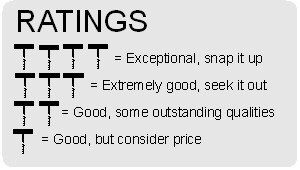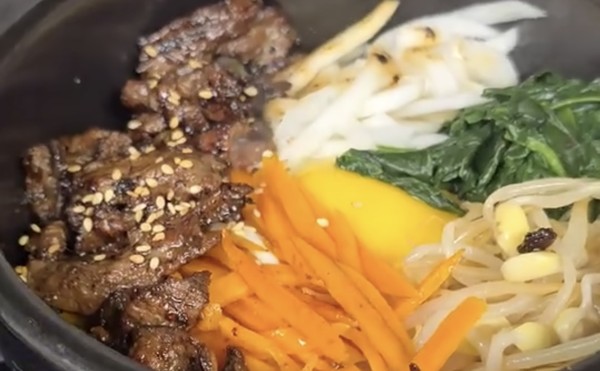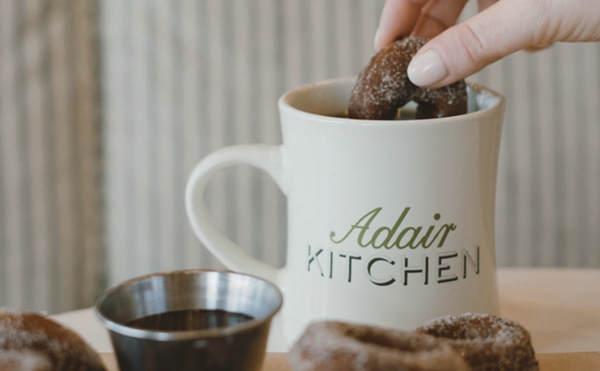Just don’t call it chardonnay. Or even sauvignon blanc, for that matter. It’s not that we’re tired of these well-known, world-wide varietals, but rather that we like a challenge. Looking to test our perceptions of alternative whites, we turned to Ray Ayala of wholesale distributor Republic Beverage, who put together a blind tasting of nine wines from grapes that aren’t household words.
Holding forth with host and taster Damien Watel at Bistro Vatel were Heidi Holcomb, beer and wine manager at Central Market; Don Choisser, pharmacist, aerospace physiologist, and former NASA Project Mercury participant; Sunny Tanner, a seasoned server at Bistro Vatel; and yours truly. Ayala also invited Donetta Wallace of Remy Cointreau USA.
The wines ranged from a Spanish albariño to a French Vouvray, with visits to Argentina, Austria, Italy, Oregon, and Texas along the way. Albariño happens to be a personal favorite for its flexibility with foods and the occasional hint of green almonds. The 2005 Don Olegario Albariño Rias Baixas, grown in a cool, wet climate on a vineyard of only 12.5 acres surrounded by eucalyptus trees, tended more towards citrus flavors — though the eucalyptus might have accounted for an unexpected note on the nose. “I liked it right off the bat,” commented Choisser, seconded by Watel who “would buy this one to go with a dinner … but it’s also a good apéritif.”
We next blew through five wines in a row that didn’t make the necessary 13 out of 20 points to be corkscrewed on the chart.
But acid, the component that keeps wines from tasting flat or flabby, was there in spades with the 2006 Masi Masianico Pinot Grigio delle Venezie, called a “Supervenetian” by its producer. “It’s inviting on the nose … and you could have glass after glass of it,” commented Holcomb — all the while agreeing that it had the acid but very little else.
The 2005 Vietti Roero Arneis, an Italian DOC made from the arneis grape, inspired a lot of commentary — just not a lot of votes. “It makes you salivate, it’s so intriguing on the nose,” said Holcomb, who also found quince flavors. But this wine, and some others that followed, really changed with a taste of the Comté cheese that was a part of an appetizer plate provided by Watel. “It makes me like it more,” said Tanner of the Vietti, and she was right.
Cheese couldn’t save the 2005 GrüVe Grüner Veltliner, the only Austrian entry, from a smack-in-the-face quality. “It made me go ‘Ooh!’” declared Holcomb. “Compare to rose-petal ice cream, “said Watel; “it’s good at the start, but you couldn’t finish a bowl.”
Torrontés is the signature white from Argentina, and can trace its parentage back to the muscat of Alexandria grape. That lineage comes through dramatically in the nose of the 2006 Colomé Torrontés produced by Donald Hess. “It’s got that muscat, floral nose going,” said Holcomb, who found it complex and “very mouth-coating.”
“Correct acidity, too” said Choisser, though Watel found it “unbalanced.” Maybe a French thing. But chauvinism didn’t urge Watel to over-praise the 2005 Remy Pannier Vallé de Jardins Vouvray, a 100-percent chenin blanc from the Loire Valley. “It’s a `General Motors` wine,” he said. “It has no defects, but I wouldn’t drink it in general.” “It’s a ‘patio pounder,’” seconded Remy’s Wallace, but Holcomb deemed it “a pretty wine,” and the panel found enough to like to score it near the top, especially with value taken into account.
Texas chauvinism, we swear, had nothing to do with selecting the top-rated wine of the panel, the 2006 Becker Vineyards Texas Viognier — and it would have rated even higher had the nose been typical of the varietal. “Pine needles!” said both yours truly and Holcomb (where honeysuckle might have been expected). “It’s definitely French in approach; you can tell they worked on the body,” mused Watel, who nevertheless found it a little unintegrated.
But as a 2006, it might just need a little time to come together — which is one of the fascinating factors of exploring less-familiar whites: Some are meant to be consumed almost immediately, others can hang around pool and parlor a little longer. Take the oath: No chard for a month. And see where it leads you.
2006 Becker Vineyards, Texas
Viognier ($16)
Piney nose, nice complexity
2006 Colmé Torrentes, Valle
Calchaquí, Salta, Argentina ($16.50)
Floral nose, good acidity
2005 Remy Pannier Vallé des
Jardins, Vouvray, Loire Valley, France
($12.75)
“Pretty” with toasty apple and pear
2005 Don Olegario Albariño,
Rias Baixas, Spain ($20)
Citrus notes, food-friendly


















